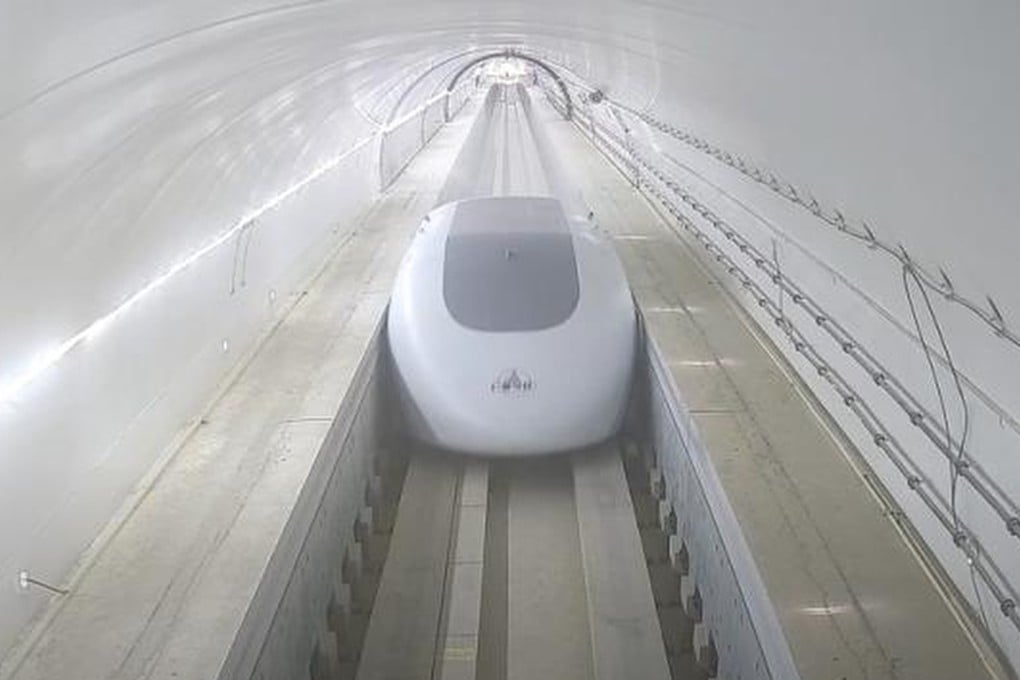Advertisement
China’s hyperloop completes first test runs, pushing ahead in race for ultra-fast land transport
- Pod travels at 50km/h (31mph) through vacuum tube at Chinese facility to check critical components and prepare for future experiments
- The project aims to develop superconducting maglev trains that can carry passengers at speeds of 1,000km/h or more
Reading Time:2 minutes
Why you can trust SCMP
46

Stephen Chenin Beijing
A Chinese research facility developing an ultra-fast hyperloop train has completed its first test runs using a full-sized passenger capsule, according to media reports.
China Space News reported on Wednesday that three test runs were completed at a superconducting maglev test line in Datong, Shanxi province. The project aims to eventually carry passengers and cargo at a speed of 1,000km/h (621mph) or faster in a near-vacuum tube and, if successful, would be the world’s fastest ground-based transport technology.
During the test runs on January 14, the capsule reached speeds of up to 50km/h, travelling a distance of 210 metres (689 feet) each time, according to the report.
Defence contractor China Aerospace Science and Industry Corporation (CASIC), which built and operates the facility, said that critical components – including a superconducting magnet, high-power electric systems, AI safety controls, wireless communication devices and sensors – had worked as planned during the tests, paving the way for future experiments at higher speeds.
The report did not specify whether air had been pumped out of the tube during the tests. Maintaining a low pressure environment in the tube is one of the biggest challenges in developing the technology.
The fastest high-speed trains now in service operate at 350km/h. Raising their speed would significantly increase rail wear and energy consumption because of air resistance.
But the Datong facility’s maglev – or magnetic levitation – technology eliminates the friction that wears down rails, while its vacuum tube reduces air resistance.
Advertisement
